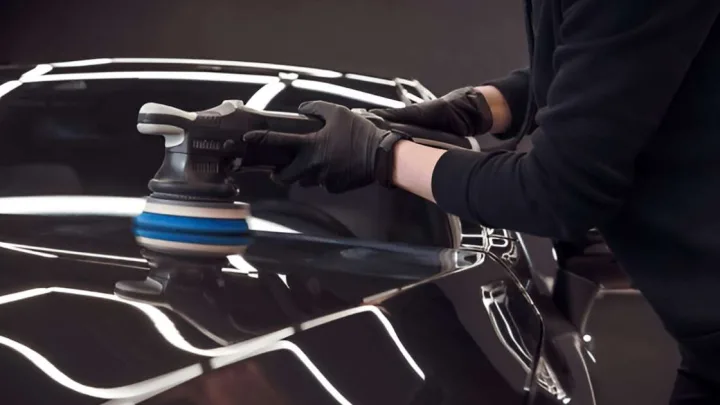
To fix peeling paint on a car hood, start by sanding the affected area, then apply primer and repaint. Dealing with peeling paint on your car's hood can be frustrating, but addressing it promptly prevents further damage and maintains your vehicle's aesthetic appeal.
Peeling paint is not just an eyesore; it exposes your car to rust and deterioration, which can lead to more significant issues down the line. Tackling this problem requires a careful approach to ensure a smooth, professional-looking finish. By following a few straightforward steps, you can restore your car's hood to its former glory.
Remember, the key to a successful paint repair job lies in preparation and patience, ensuring your car looks its best and is protected against the elements.
Introduction To Peeling Paint On Cars
Peeling paint on a car hood not only spoils the sleek look but also exposes the metal beneath. This can lead to damage that goes beyond surface level aesthetics. Understanding the causes and solutions is key to restoring your vehicle's appearance and protection.
The Aesthetics And Protection Issues
When paint starts to peel, it affects a car's visual appeal. Shiny exteriors turn dull and uneven. More than looks, peeling paint exposes the hood to the elements. This can lead to rust and further damage. The hood covers vital engine components. Without this protective layer, these parts risk damage.
Common Causes Of Paint Peeling
- Environmental factors: Sun, rain, and snow wear down paint over time.
- Poor maintenance: Neglecting waxing and washing accelerates peeling.
- Low-quality repairs: Subpar paint jobs often lead to peeling.
- Chemical damage: Harsh cleaners can strip away paint layers.
- Age: Older cars are more prone to paint degradation.
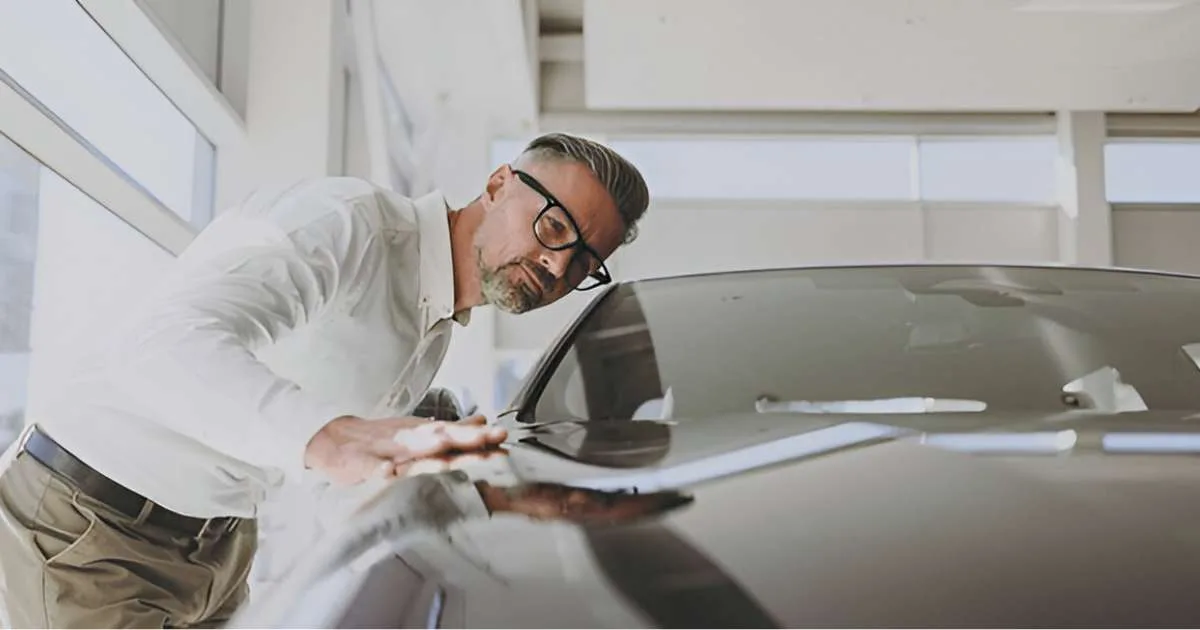 Assessing The Damage
Assessing The Damage
Assessing The Damage
Before fixing peeling paint on a car hood, assessing the damage is key. Understanding the damage helps decide the best fix. This section breaks down how to assess peeling paint on your car hood.
Identifying The Extent Of Peeling
First, closely look at the peeling area. Use a flashlight if needed. Note if the peeling is small or large. Small areas might be less than a hand size. Large areas are bigger. Check if the peel is just the top coat or deeper. This will guide your next steps.
- Small, surface-level peels can often be a DIY project.
- Large, deep peels might need a professional's touch.
When To Diy Vs. Professional Help
Deciding between DIY or professional help depends on the damage size and depth.
| Damage Type | Recommended Action |
|---|---|
| Small, surface-level | DIY |
| Large, deep | Seek professional help |
DIY can save money for small fixes. You will need patience and the right tools.
For large, deep peels, professionals ensure a smooth, lasting finish. They have the tools and skills. This prevents future peeling.
Gathering The Right Tools And Materials
When your car's hood starts to show signs of peeling paint, it's essential to act swiftly. A successful repair begins with gathering the right tools and materials. Let's ensure you're fully equipped to restore your car's hood to its former glory.
Essential Supplies For Repair
Before you start, make sure you have these must-have items:
- Sandpaper: For smoothing the surface.
- Tack cloth: To remove dust particles.
- Masking tape: Protects areas from accidental paint.
- Protective gloves: Keeps hands clean and safe.
- Safety glasses: Shields eyes from debris.
Choosing Quality Paints And Primers
Picking the right products is crucial for a lasting fix:
| Type | Use | Tip |
|---|---|---|
| Primer | Base layer | Match with paint type |
| Paint | Color layer | Car-specific codes |
| Clear coat | Top layer | UV protection |

Credit: www.youtube.com
Preparation Steps For Repairing Peeling Paint
The hood of your car is prone to damage from the sun, weather, and debris. Peeling paint not only looks unsightly but can lead to rust. To restore your car's appearance, proper preparation is vital before you repaint. Follow these essential steps to ensure a lasting repair.
Cleaning The Affected Area
First, clean the peeling area thoroughly. Remove dirt, grease, and any loose paint. Use a mild detergent and a sponge for this task. Rinse the surface with water and let it dry completely.
- Wash with soapy water
- Rinse thoroughly
- Dry with a clean cloth
Sanding Techniques For A Smooth Base
After cleaning, sanding is crucial. Sanding removes the old paint and creates a smooth base for the new coat. Start with a coarse sandpaper and gradually move to a finer grade.
| Step | Sandpaper Grit | Action |
|---|---|---|
| 1 | Coarse (80-150) | Remove peeling paint |
| 2 | Medium (150-220) | Smooth the surface |
| 3 | Fine (220-320) | Prepare for primer |
Always sand in the direction of the grain. Keep the area clean to see your progress. Wipe the dust off with a tack cloth before you move to the next step.
- Use circular motions
- Check surface smoothness
- Clean the area before priming
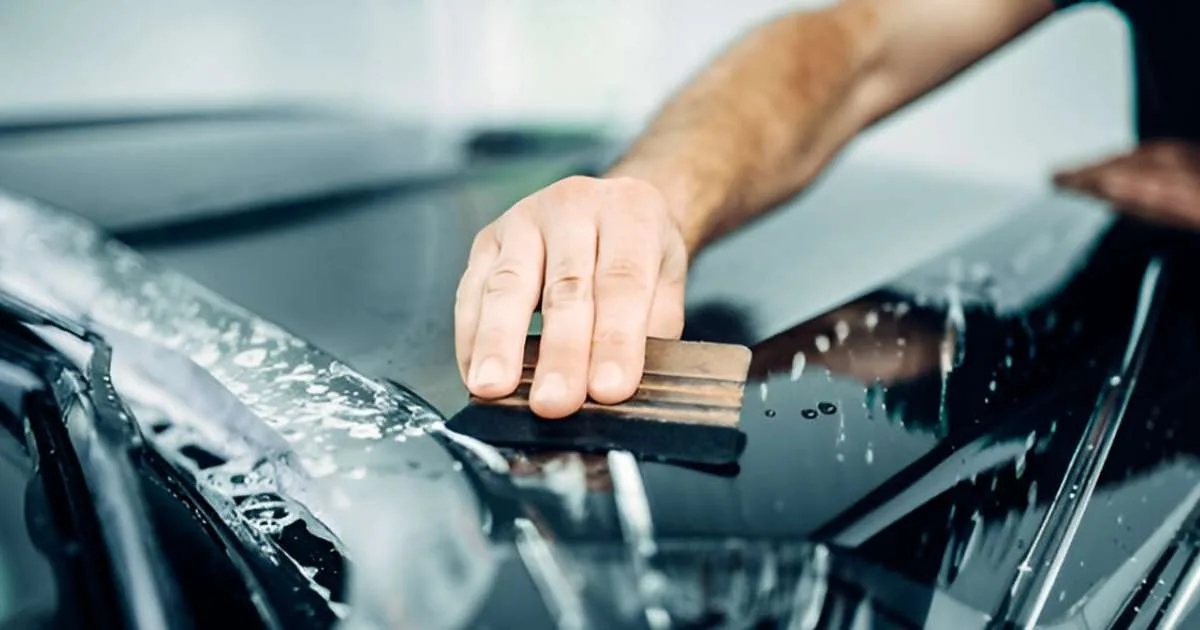 Applying Primer
Applying Primer
Applying Primer
Before painting your car hood, applying primer is key. It helps paint stick better. Let's dive into why primer is important and how to apply it correctly.
The Importance Of Primer
Primer acts as a foundation for your paint. It ensures that the new paint adheres smoothly and lasts longer. Without primer, paint may peel off quickly. It also protects the hood from rust and damage.
Step-by-step Primer Application
- Clean the hood thoroughly. Remove all dirt and rust.
- Sand the surface. Use fine-grit sandpaper for a smooth finish.
- Wash the hood again. Make sure it's completely dry.
- Apply masking tape around the hood. Protect areas you don't want to paint.
- Shake the primer can. This mixes the primer well.
- Spray the primer evenly. Keep the can about 6 inches from the surface. Apply in a steady back-and-forth motion.
- Let it dry. Check the primer's instructions for drying times.
- Apply a second coat if needed. Ensure the first coat is completely dry.
Following these steps prepares your car hood perfectly for painting. It ensures a smooth, lasting finish.
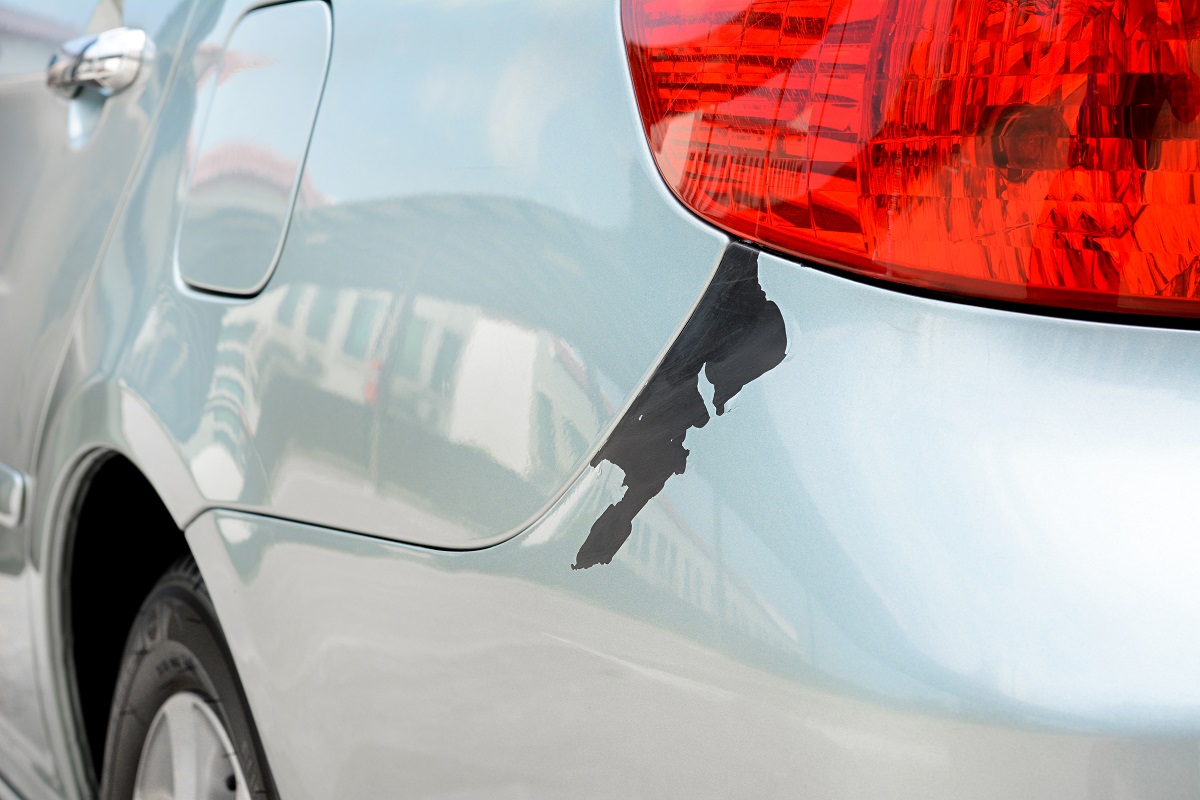
Credit: www.mccarthycollisioncenters.com
Color Matching And Paint Application
When your car hood starts to show signs of peeling paint, it's crucial to address it promptly. Not only does it affect the car's appearance, but it also exposes the metal beneath to the elements, risking rust. The process of fixing peeling paint on a car hood involves two essential steps: color matching and paint application. Getting the color just right and applying the paint properly will ensure a seamless and professional-looking finish.
Tips For Perfect Color Match
Color matching is critical for a visually appealing repair. Follow these tips to ensure a perfect match:
- Find the color code on your car's compliance plate.
- Use a professional color matching service for accuracy.
- Test the color before full application.
- Remember, paint can dry darker.
Paint Application Techniques
Once the color match is confirmed, it’s time to apply the paint. Use these techniques for the best results:
- Clean the hood thoroughly to remove any debris.
- Apply primer if the metal is exposed.
- Use thin, even layers of paint.
- Allow each layer to dry completely.
- Finish with a clear coat for protection.
Proper application ensures longevity and protects your car's hood from future damage. With patience and attention to detail, your car's hood can look as good as new.
Ensuring A Smooth Finish
Peeling paint on a car hood not only affects the appearance but can lead to rust. A smooth finish is crucial for restoring the car's look and protecting it from further damage. Proper techniques and steps can ensure the paint not only adheres better but also lasts longer.
Layering Paint For Durability
Layering paint on a car hood boosts its resilience. Start with a primer to create a strong base. Follow with thin layers of color paint. Each layer should dry before adding the next. Finish with a clear coat for extra protection and shine.
Sanding And Buffing For A Glossy Finish
Sanding smoothens the surface and helps paint stick. Use fine-grit sandpaper for the best results. After painting, buff the surface. This will give your car hood a glossy and sleek finish.
- Wash the hood and let it dry.
- Apply primer in even coats.
- Wait for the primer to dry.
- Add color paint in thin, even layers.
- Let each layer dry completely.
- Cover with clear coat for shine and protection.
- Sand with fine-grit paper between coats.
- Buff for a high-gloss finish.
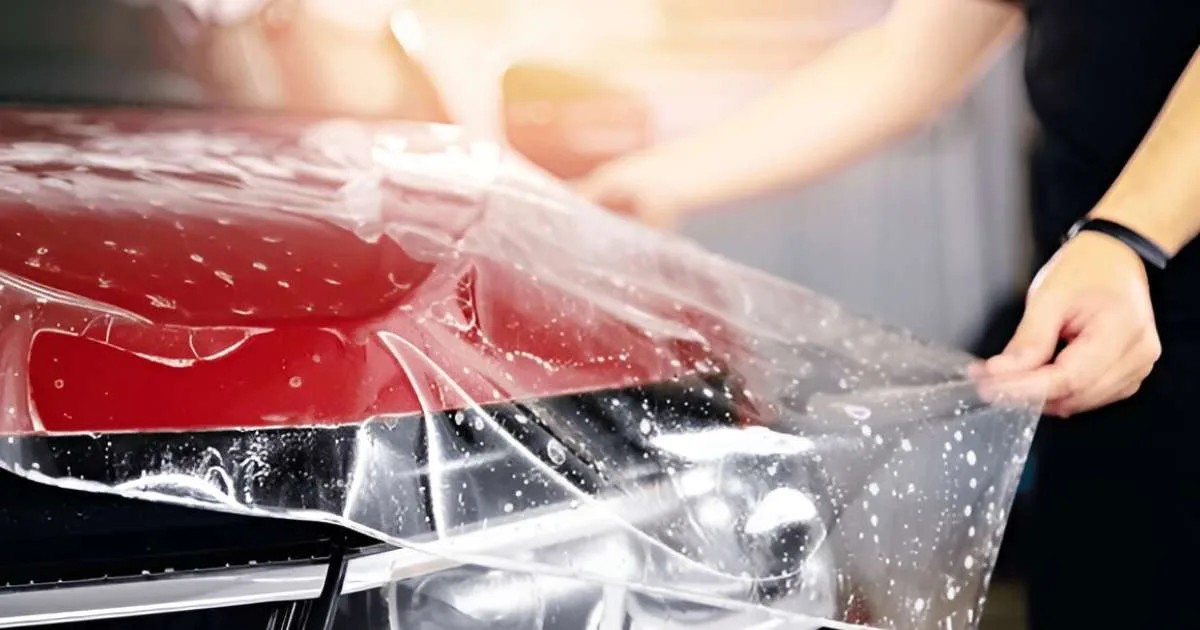 Aftercare And Maintenance
Aftercare And Maintenance
Aftercare And Maintenance
Aftercare and maintenance are crucial for your car's longevity. Once the peeling paint on your car hood is fixed, proper care will ensure it stays pristine. Let's dive into how to protect and maintain your car's new paint job.
Protecting Freshly Painted Surfaces
Shield your car's hood from damage with these tips:
- Keep it clean: Wash the hood gently with automotive soap.
- Avoid harsh elements: Park in the shade and use a car cover.
- Apply wax: Use a high-quality car wax for extra protection.
Regular Maintenance To Prevent Future Peeling
Follow these steps to avoid peeling:
- Inspect regularly: Check the hood often for signs of wear.
- Touch-up chips: Small chips can lead to bigger problems.
- Professional checks: Have a pro examine your paint annually.
Prevention Tips For Paint Longevity
Keeping a car's paint in top shape is vital. It shields the body from rust and maintains its value. Regular maintenance stops paint from peeling. This section offers advice to prevent car hood paint from peeling.
Habits To Avoid Paint Damage
- Avoid parking in direct sunlight.
- Always clean bird droppings promptly.
- Wash the car regularly to remove harmful substances.
- Use a soft cloth or sponge to prevent scratches.
- Limit the use of automatic car washes.
- Touch up small chips quickly to prevent spreading.
Protective Coatings And Sealants
Protective layers keep the paint safe. They block UV rays and reduce oxidation. Here are some options:
| Coating Type | Benefits |
|---|---|
| Wax | Shine and water beading. |
| Sealant | Long-lasting protection. |
| Ceramic Coating | Hard shell against scratches. |
Apply these products regularly. Follow the manufacturer's instructions for the best results.

Credit: www.youtube.com
Troubleshooting Common Issues
Troubleshooting Common Issues with peeling paint on a car hood can be frustrating. Let's dive into practical steps to restore your car's appearance.
Addressing Bubbles And Blistering
Paint bubbling or blistering is often due to moisture. To fix this:
- Wash the area with soapy water.
- Dry thoroughly using a clean cloth.
- Sand the bubbled paint away gently.
- Apply a primer suited for automotive use.
- Finish with matching paint in thin layers.
Fixing Mismatched Paint
Mismatched paint can stand out. To correct mismatch:
- Find the exact color code for your car.
- Buy high-quality automotive paint.
- Test paint on a small, unseen section first.
- Apply several thin layers for best match.
- Allow ample drying time between coats.
Conclusion: Enjoying Your Car's Renewed Look
Fixing peeling paint on your car hood brings satisfaction. Your car looks new again. This effort increases your car's value and appeal.
Celebrating The Transformation
The change is clear. Your car shines like never before. Share this achievement with friends. They will notice your car's beauty.
- Take before and after photos.
- Show off your car at gatherings.
- Enjoy driving a car that looks brand new.
Final Thoughts On Diy Paint Repair
DIY paint repair saves money. It also gives a sense of pride. Remember these points for a successful repair:
- Choose the right paint.
- Prepare the surface well.
- Apply paint carefully.
- Let it dry completely.
Follow these steps for a smooth finish. Your car will thank you.
Frequently Asked Questions
Why Does Car Hood Paint Peel Off?
Peeling paint on a car hood often results from exposure to elements, poor paint jobs, or lack of maintenance. Over time, UV rays, moisture, and temperature fluctuations can cause the paint to lose adhesion and peel.
Can I Fix Peeling Paint On My Car Hood Myself?
Yes, you can fix peeling paint on a car hood yourself by sanding the affected area, applying primer, color matching the paint, and finishing with a clear coat. However, ensure you follow proper steps for the best results.
How Much Does It Cost To Repair Peeling Paint On A Car?
The cost to repair peeling paint on a car hood varies. It can range from $150 to over $1000, depending on the extent of the damage and the quality of the repair services chosen.
What Are The Steps To Fix Peeling Paint On Car Hood?
To fix peeling paint, start by cleaning the area, then sand it down. Apply a primer, followed by the color-matched paint, and finish with a clear coat. Allow ample drying time between each step.
Conclusion
Tackling peeling car hood paint can be straightforward with the right approach. Remember, early intervention and proper techniques are key. Keep your car looking pristine by following the steps outlined, and avoid costly repairs down the line. Drive confidently, knowing your vehicle not only runs well but looks great too.
Disclosure
Some links may be affiliate links. That means we may earn a small commission at no extra cost to you.